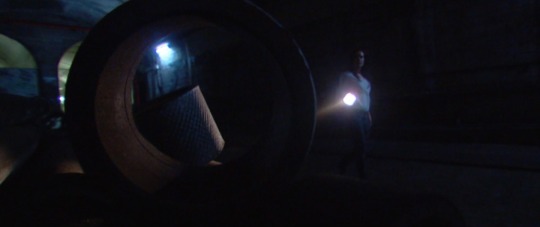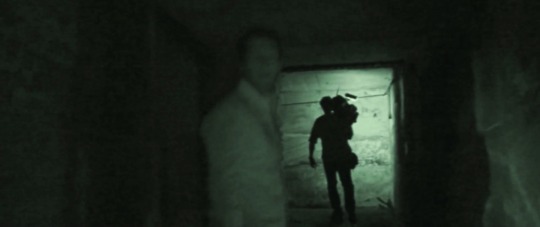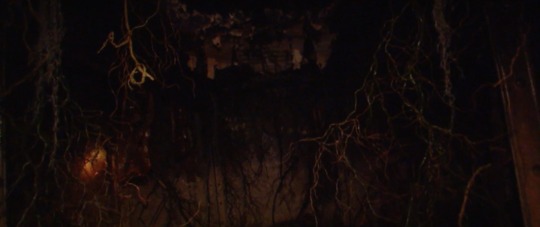#steve davis
Text










The Tunnel (2011)
Directed by Carlo Ledesma
Cinematography by Steve Davis
5 notes
·
View notes
Video
youtube
Armando’s Rhumba by Chick Corea & The Spanish Heart Band, live at the Montreux Jazz Festival in 2019
#music#live#live music#chick corea#the spanish heart band#luisito quintero#chick corea & the spanish heart band#carlitos del puerto#marcus gilmore#steve davis#michael rodriguez#jorge pardo#niño josele#nino de los reyes#video#mei fa tan#montreux jazz festival#montreux jazz festival 2019#line de kaenel#anne laure hahn#tim perone#matthieu prêtre#dorian n’guyen#nicolas bonard#thibaud megevand
24 notes
·
View notes
Text

7 notes
·
View notes
Text
The unsolicited proposal from Elon Musk’s tunnel-building venture arrived in January 2020. To the local transportation authority, it felt like finding Willy Wonka’s golden ticket.
Officials had started planning for a street-level rail connection between booming Ontario International Airport and a commuter train station 4 miles away, with an estimated cost north of $1 billion. For just $45 million, Mr. Musk’s Boring Co. offered to instead build an underground tunnel through which travelers could zip back and forth in autonomous electric vehicles.
Dazzled by Boring’s boasts that it had revolutionized tunneling, and the cachet of working with the billionaire head of EV maker Tesla Inc., red down pointing triangle the San Bernardino County Transportation Authority dumped plans for a traditional light rail and embraced the futuristic tunnel.
When it came time to formalize the partnership and get to work, Boring itself went underground—just as it has done in Maryland, Chicago and Los Angeles. Boring didn’t submit a bid for Ontario by the January 2022 deadline.
The six-year-old company has repeatedly teased cities with a pledge to “solve soul-destroying traffic,” only to pull out when confronted with the realities of building public infrastructure, according to former executives and local, state and federal government officials who have worked with Mr. Musk’s Boring. The company has struggled with common bureaucratic hurdles like securing permits and conducting environmental reviews, the people said.
“Every time I see him on TV with a new project, or whatever, I’m like: Oh, I remember that bullet train to Chicago O’Hare,” said Chicago Alderman Scott Waguespack. Boring had backed away from its proposal for a high-speed tunnel link to the airport there.
Mr. Musk and Steve Davis, president of Boring, didn’t respond to requests for comment.
Boring’s only tunnel open to the public is a 1.6-mile “loop experience” under the Las Vegas Convention Center. There, Teslas with hired drivers ferry convention-goers through neon-lit white tunnels at speeds of about 30 miles an hour.
Boring has yet to make good on its most ambitious pitch: that it can design tunnel-boring machines that are so fast to operate that they will drive down costs and shake up the industry. Tunneling industry veterans question some of Mr. Musk’s claims.
The company has believers. This spring, tech-focused venture-capital firms Sequoia Capital and Vy Capital led a $675 million fundraising round that valued Boring at $5.7 billion. Major real-estate firms including Brookfield, Lennar and Tishman Speyer are among the investors.
“Their technology is now past the state-of-the-art, and improving at an exponential rate,” Sequoia partner Shaun Maguire wrote in a post on the firm’s website, announcing the round.
Mr. Maguire declined to comment and the other investors didn’t respond to detailed requests for comment.
Mr. Musk has frequently criticized government regulation, calling it an impediment to building new infrastructure. At a WSJ CEO Council event in 2020, he said he had moved from California to Texas, where Tesla was building a new factory, in part because of government regulations. Government should “just get out of the way,” he said.
The Boring Co., based in Pflugerville, Texas, occupies an odd place in Mr. Musk’s business empire, which includes Tesla, Space Exploration Technologies Corp., or SpaceX, and most recently Twitter Inc. He launched the tunneling venture with a tweet in December 2016 that many took as a joke. “Traffic is driving me nuts. Am going to build a tunnel boring machine and just start digging…” Mr. Musk wrote.
“I am actually going to do this,” he added in a second tweet.
At Boring’s helm is Mr. Davis, a longtime lieutenant to Mr. Musk who came from SpaceX. Some of the space contractor’s investors have complained about Boring soaking up SpaceX’s resources, including employees and equipment purchased with SpaceX funds.
Mr. Musk’s leadership style—he recently told his Twitter employees they must be “extremely hardcore” or resign—pervades Boring, too, several former senior executives said. Boring employees work long hours and weekends, and the company has struggled to retain employees, particularly in technical positions such as engineering, they said.
For years, the San Bernardino County Transportation Authority had sought a solution to an enviable problem: Freight-focused Ontario International was steadily gaining passengers. Airport officials decided a link to a nearby commuter rail station would help it grow even more.
The authority issued a request for proposals for a light rail line, estimated to cost between $1 billion and $1.5 billion, when Boring’s pitch showed up.
The authority struck a preliminary deal with Boring in February 2021 for a narrow-diameter tunnel filled with autonomous EVs for $45 million.
“When I went to the public and shared this, the enthusiasm was overwhelming, just for something new and different,” said Janice Rutherford, a county supervisor and transportation authority board member. “And it’s the Boring Company, so Elon Musk brings that kind of sexiness to it, if you will.”
Over time, the company and the transportation authority dropped references to autonomous vehicles. By late 2021, cost projections rose to almost $500 million, agency documents show.
The authority asked for a third-party environmental review, required by state law, of the Boring proposal’s impact, records show. That’s when the process came to a halt.
“We tried to reach agreement with them,” said Carrie Schindler, the authority’s deputy executive director. “We went through the standard request for proposal process. And ultimately at the end of that process, they decided not to propose.”
Boring had powerful boosters from the time Mr. Musk declared his war on traffic in late 2016. Trump administration officials counseled the billionaire on how to pursue his stated goal of building an underground Hyperloop from New York to Washington. The Hyperloop, a concept Mr. Musk revived based on a proposal from the 1970s, calls for moving passengers through vacuum tubes at around 700 miles an hour. Despite an influx of investor interest, no commercial system has ever been constructed.
Mr. Musk tweeted in July 2017 that he had “verbal govt approval” for Boring to begin building the Hyperloop. Besieged by calls from the media and government officials, White House staff helped come up with a follow-up tweet, according to former government officials. “Still a lot of work needed to receive formal approval, but am optimistic that will occur rapidly,” Mr. Musk later tweeted.
That fall, Maryland Gov. Larry Hogan was standing at a fenced-off site affixed with Boring signs near Fort Meade and telling a videographer to “get ready” for a high-speed train from Baltimore to Washington. Mr. Hogan declined to comment.
An aide to Mr. Hogan toured a parking-lot test site at the company’s then-headquarters near Los Angeles International Airport, getting a look at a tunnel-boring machine the company purchased secondhand. Boring named it Godot, the title character in Samuel Beckett’s play about a man who never shows up.
The Republican Hogan administration sped up the bureaucratic process for Boring, granting a conditional permit in October 2017 and an environmental permit a few months later.
All Boring had to do was bring its machine and start digging, former Maryland officials said. But months, and then years, passed. Maryland was waiting for Godot.
Boring deleted the Maryland project from its website last year.
The company also captured the attention of Chicago’s then-Mayor Rahm Emanuel, who wanted a high-speed rail link between O’Hare International Airport and the downtown business district.
In 2017, Mr. Musk proposed a Hyperloop-like solution, in which 16-passenger pods would be propelled through an underground tunnel on electric “skates” moving up to 125 miles an hour. Mr. Musk said he could do it for less than $1 billion, and that Boring would finance the job and keep the fare revenue for itself.
Mr. Emanuel’s Democratic administration selected Boring to develop the system. At a press conference with Mr. Musk, the mayor dismissed “doubters,” who he said also would have questioned other landmark projects, like the 1900 reversal of the flow of the Chicago River.
Mr. Waguespack, the alderman, and other elected officials challenged the cost estimates as absurdly low, warning that taxpayers would be on the hook if Boring couldn’t build as cheaply as it proposed. “It was a lot of flash and dash and not any kind of public discussion about whether it was even necessary or not,” Mr. Waguespack said.
Mr. Emanuel said in an interview that the company had promised to assume financial risk for building the proposed tunnel. The proposal didn’t go any further after Mr. Emanuel decided not to seek a third term.
Other Boring projects announced with fanfare, including a 3.6-mile underground high-speed transportation link from the Hollywood subway line to Dodger Stadium in Los Angeles, also have failed to materialize.
Some sites where Boring once courted public attention are now abandoned. The entrance to its first demonstration tunnel sits behind a chain-link fence in a lot near SpaceX’s headquarters in Hawthorne, Calif. In the California desert town of Adelanto, where city leaders once hailed the arrival of a Boring research operation, stacks of concrete lining segments sit alongside a short U-shaped section of tunnel partially blocked off with plywood amid rattlesnake warning signs.
For the past year, Boring has been directing potential clients to its work in Las Vegas as a showcase for what systems in their cities could look like.
“We’re fans of the Boring Company,” said Steve Hill, chief executive of the Las Vegas Convention and Visitors Authority. “We’re fans of clean transportation systems that are great. So we want to help.”
The convention authority paid Boring about $50 million to build two 0.8-mile single-direction tunnels connecting different wings of the sprawling convention center. It opened in the spring of 2021. This year, Boring completed a short offshoot between the facility and Resorts World casino and hotel.
The Clark County and Las Vegas city government councils have approved a 34-mile loop of tunnels that Boring will finance. Private casino and resort owners are being asked to pay for stations. The company plans to break ground soon on segments, Mr. Hill said.
Boring signed a 50-year contract to operate the Vegas loop and will collect revenue from ticket sales, sharing a small percentage with the city and county after crossing a quarterly revenue threshold.
To get a permit to begin operating the convention loop, Boring had to run a demonstration showing that it could move 4,400 passengers an hour.
Boring passed the test and received its permit, in a category called ATS, for Amusement and Transportation Systems—the same one that local officials award to roller coasters.
Crowds strain the network of individually driven cars far more than mass transit like light rail, according to some of the former executives. In social media postings, visitors have documented the loop’s Teslas sitting, underground, in traffic. The fleet of required accredited drivers adds to labor and administrative costs.
At the convention’s jam-packed auto products show this month, visitors queued in 10 lines in a subterranean station, waiting to hop into Teslas that drivers steered through a pair of tunnels just inches wider than the sedans themselves.
Boring employees directed attendees into cars. Mr. Davis, in a safety-orange sweatshirt, paced among them and talked to convention officials who later said he often manages operations on site. When approached by a reporter, he declined to comment.
Mr. Musk has lately tweeted videos of a Boring-designed machine, nicknamed Prufrock after the title character of the T.S. Eliot poem, digging test holes in the Texas dirt. Boring says Prufrock is designed to dig at one mile a week, and that a succeeding version will be able to dig 7 miles a day.
Boring says it can improve tunneling speeds with fully electrified machines and by digging continuously, rather than stopping to assemble sections of the tunnel wall. The company also says angling machines in from ground level will help avoid the cost of first digging a shaft to launch the machine.
Veterans of the tunneling industry note that tunnel-boring machines have been electrified for decades, and that neither continuous construction of the tunnel lining nor digging in from aboveground is new.
Boring’s speed claims are “totally unrealistic,” said Lok Home, president of the Robbins Co., a leading maker of tunnel-boring machines. “There’ll be improvements here, for sure, but there’s not going to be a revolution.”
Industry veterans said that in terms of cost, factors like property acquisition, permitting and engineering work, and the sheer complexity of digging through rock or soil matter far more than tunneling speed.
As for most of the tunneling Boring has done, in the desert soils of Las Vegas, Mr. Home said, “That’s about as easy as it gets.”
Public officials across the country remain eager to land Boring projects, and some are eyeing the roughly $1 trillion federal infrastructure law as a source of potential funding.
In Fort Lauderdale, Democratic Mayor Dean Trantalis is pointing to the availability of the funding as he tries to sell the public on a $100 million pair of Boring-built tunnels that would ferry beachgoers back and forth from downtown. Mr. Trantalis said that he was awe-struck by Boring’s Las Vegas project, which he toured last year.
North Miami Beach officials want to use federal infrastructure money to pay Boring for a tunnel project to reduce traffic.
On a lark, Vice Mayor Michael Joseph tweeted at Boring and Mr. Musk in February 2021. Company officials quickly expressed interest. “They just called me out of nowhere and said, ‘Hey, this is Boring,’” Mr. Joseph said. “I was very surprised they responded to my tweet.”
In Ontario, the San Bernardino County Transportation Authority hasn’t abandoned its tunnel dream. The authority is seeking bids from other construction companies to build tunnels, and from operators to run electric vehicles inside.
Ms. Schindler credited Boring with introducing local officials to the possibility of subterranean transportation that might cost less than more conventional aboveground systems.
“While I’m disappointed we’re not in design at this point and headed towards construction, I’m grateful for the disruption that I think got us going in a really viable direction,” she said.
The authority said it would still welcome a bid from the Boring Co.
#us politics#news#the wall street journal#elon musk#Boring Co.#tunnel boring machine#tunnel building#subterranean tunnels#San Bernardino County Transportation Authority#tesla#tesla motors#Scott Waguespack#Steve Davis#Sequoia Capital#Vy Capital#SpaceX#Janice Rutherford#Gov. Larry Hogan#Maryland#california#illinois#Rahm Emanuel#hyperloop#2022#eat the rich#eat the fucking rich
12 notes
·
View notes
Text
youtube
Gonna pull a couple of things together tonight. I think I have probably listened to this record as much as any of Coltrane's (roughly on par with A Love Supreme), must be the romantic in me. Tyner, Davis, and Jones are all absolutely cooking on the track. Which is self-evident just in noting their presence.
My brain is also still in The Sound of Music mode, but maybe getting just a little more weird.
I was recently thinking about one of my favorite single-season television shows ever, "John From Cincinnati." I think it's just that the kind of elliptical weirdness Milch has is something I share. I think (maybe...) episode six is my favorite--pun only partially intended.
#john coltrane#my favorite things#mccoy tyner#steve davis#elvin jones#the sound of music#proud parenting#john from cincinnati#our daily jam#Youtube
2 notes
·
View notes
Video
youtube
Archive - Kings Of Speed
#youtube#archive#kings of speed#danny griffiths#darius keeler#rosko john#dace pen#pollard berrier#maria q#jonathan noyce#steve harris#karl hinze#smiley#steve davis#holly martin#mickey hurcombe#lisa mottram#trip hop#electronica#progressive rock#shoegaze#new prog#music#music is love#music is life#music is religion#raining music
2 notes
·
View notes
Text
Listen to the sixth episode of ’60 Minutes or less’, the new podcast from Birthday Cake For Breakfast – featuring Steve Davis of The Utopia Strong!
Words: Andy Hughes
Finally – a world class athlete on ’60 Minutes or less’, the new podcast from Birthday Cake For Breakfast! For our sixth episode, we welcome royalty – the only guest thus far with an OBE, former world number one in snooker, Steve Davis.
Amassing 71 major titles over his playing career, Davis remains one of the world’s best-known snooker players. Not content with such a…

View On WordPress
#60 Minutes or less#Birthday cake for breakfast#International Treasure#Kavus Torabi#Lamp Of Glory#Marc Riley#Michael York#Rocket Recordings#Steve Davis#The BBC Sessions#The Tower Is Locked#The Utopia Strong#Weather All
0 notes
Text

Brian Griffin, World Champion Snooker Player Steve Davis
0 notes
Text
John Coltrane Reissue Review: Evenings at the Village Gate: John Coltrane with Eric Dolphy

(Impulse!/UMe)
BY JORDAN MAINZER
Not even two years after A Love Supreme: Live in Seattle saw the light from Joe Brazil's private collection, a new John Coltrane treasure has been given to us, unearthed this time by accident. A Bob Dylan archivist, scouring through the archives of the New York Public Library for the Performing Arts, found an August 1961 recording of John Coltrane with Eric Dolphy at Greenwich Village's long-shuttered Village Gate. While Coltrane's November performances from the same year at the Village Vanguard have long been available, either as part of his 1962 live album or a 1997 box set, this collection shows some familiar players a bit rougher around the edges. Future Nina Simone and Dylan engineer Richard Alderson, who wanted to test a newly found single ribbon microphone, decided to record the set, and everything from McCoy Tyner's restrained piano to, well, the overall sound quality, has the vibe of a group of geniuses still figuring things out, a fascinating snapshot in an ever-changing time in jazz.
In an era where our most revered artists take seemingly forever to release new albums, it's hard to fathom just what luminaries like Coltrane did back then, and the rapid pace of change they faced in a burgeoning music industry. In March, he released My Favorite Things on Atlantic, which yielded surprising hits in adaptations of George Gershwin's "Summertime" and Rodgers and Hammerstein's "My Favorite Things", the latter of which received significant radio airplay. Two months later, his Atlantic contract was bought by Impulse! While he kept Tyner and drummer Elvin Jones in his band, he replaced bassist Steve Davis with a young Reggie Workman and brought on multi-instrumentalist Eric Dolphy, forming the basis of a live quintet. His studio ensemble grew even larger on the first album he recorded for Impulse!, Africa/Brass, also one of his first to employ two bass players. Eventually, though, he'd settle into the Classic Quartet, Jimmy Garrison replacing Workman for the next several years, the four producing stone cold classics like, yes, A Love Supreme. It's impossible to separate this context when listening to Evenings at the Village Gate: John Coltrane with Eric Dolphy in all of its rawness.
Really, Evenings at the Village Gate is a true moment in time and one of arguable significance, though listening to it is a fascinating exercise. You constantly find yourself wishing you were there to witness it, watching an audience in real time react to where you know jazz would end up. As Jones' pattering drums and Workman and Tyner's steady bass and piano introduce "My Favorite Things", Dolphy subtly flutters his clarinet. Six minutes in, Coltrane announces himself with a brawny saxophone line before blasting streaks of notes above the band. When he very occasionally returns to the song's main refrain, it's like a sigh of relief before he embarks on another freeform journey. Sometimes, you can hear an audience member clapping, thinking his solo has finished, but he keeps going. Dolphy offers a similarly tattered solo on Benny Carter's "When Lights Are Low", while the rest of the band lurches. Tyner's solo, for example, is sprinkled but so low in the mix you can almost clearly hear background chatter in the club, and you can definitely decipher Workman's plucks. The band is risky and adventurous, unafraid to fail.
The final three tracks performed would eventually be recorded, including "Impressions", a Coltrane composition first set to tape in 1962. The version on Evenings at the Village Gate is an early run-through the way a lot of jazz instrumentalists do today. On one hand, hearing him breathlessly and immediately whittle away at schemas of jazz must have been thrilling. On the other, compared to the live versions of the song from months later, on this one, Coltrane embraces true chaos rather than controlled chaos. Only Jones and Tyner are truly honed in here, the former shining with his dexterousness throughout and underrated dynamism in his be-bop duet with the latter. If you've always thought Coltrane's recording of "Greensleeves", meanwhile, sounds a little bit like "My Favorite Things", Tyner somewhat interpolates the latter song as Jones' drum fills pervade the performance. Tyner's two-handed solo mid-way through simultaneously showcases the song's theme and his own phrasing, while Coltrane and Dolphy enter much later, as if they've been stockpiling on reserves before gradually taking the tune to dizzying new heights.
If there's a true highlight on Evenings at the Village Gate, it's of course the only known recorded version of Africa/Brass' "Africa". Art Davis fills in on additional bass drones, with Coltrane on tenor saxophone, and the song feels like the most the band had been in sync all night. Perhaps that's because there's nothing else to compare it to, but the performance is still thrilling taken on its own, from Jones' raindrop pitter patters to Tyner's unshakeable refrain. Coltrane and Dolphy give way to the rest of the band for a while, and the tune slowly ascends as they tease a return, first giving Jones his due with a rolling solo and then actually returning to rapturous applause, skronking and squeaking away. You have to think that some members of the audience had no conception for what they just saw. You also have to think the set made them want to dive in further.
youtube
#album review#john coltrane#new york public library for the performing arts#Evenings at the Village Gate: John Coltrane with Eric Dolphy#eric dolphy#impulse!#ume#a love supreme: live in seattle#joe brazil#bob dylan#village gate#village vanguard#nina simone#richard alderson#mccoy tyner#my favorite things#george gershwin#atlantic#elvin jones#steve davis#reggie workman#africa/brass#jimmy garrison#a love supreme#benny carter#art davis#richard rodgers#rodgers and hammerstein#oscar hammerstein#evenings at the village gate
1 note
·
View note
Text

Fogfest | Sat 5th August | Iklectik, London, UK
#lauren sarah hayes#improvisation#live electronics#electronic music#experimental music#noise#london#iklectik#fogfest#howlround#tpwiiikatj#Nad Spiro#Steve Davis#Graham Dunning#DJ Food
0 notes
Text
a little chat

1 note
·
View note
Photo

How Much Sustainable Fuel Do We Need for Net-Zero Flights?
Airlines will need to ramp up sustainable fuel production to make flights greener.
https://www.inverse.com/science/sustainable-flights-net-zero
#Environment#Climate Crisis#Airplanes#Transportation#Syndicated#The Conversation#Science#technology#Candelaria Bergero#Steve Davis#and#Inverse
0 notes
Video
youtube
Polyphonic and Adam Neely on how John Coltrane broke My Favorite Things
#music#video essay#polyphonic#noah lefevre#adam neely#john coltrane#modal jazz#oscar hammerstein ii#richard rodgers#the sound of music#jazz#julie andrews#mary martin#rodgers and hammerstein#elvin jones#steve davis#mccoy tyner#miles davis#george russell#Typography#essay
32 notes
·
View notes
Text
Steve Davis

5 notes
·
View notes
Text




Brendan Davies and Steve Cruz | Mustang's Limits
2K notes
·
View notes
Text

Keep Your Courage, Natalie Merchant’s tenth solo studio album and the first of new material since her 2014 self-titled record, is due April 14. Pre-orders in the Nonesuch Store include access to an exclusive virtual pre-release listening event on April 6 via FlyMachine featuring songs from the album and a conversation between Merchant and a host.
An eclectic album, produced by Merchant, it features lush orchestrations throughout, two duets sung with vocalist Abena Koomson-Davis of Resistance Revival Chorus, contributions from the Celtic folk group Lúnasa and Syrian clarinetist Kinan Azmeh, and horn arrangements by jazz trombonist Steve Davis. There are nine original songs by Merchant and an interpretation of a song by Ian Lynch of the Irish band Lankum. The vinyl edition includes four bonus tracks from earlier albums, previously unreleased on vinyl.
In celebration of the release, Merchant will tour the US this spring and fall; European dates will be announced shortly. Details/tickets here.
#natalie merchant#keep your courage#resistance revival chorus#lunasa#kinan azmeh#steve davis#lankum#vinyl#nonesuch#nonesuch records
1 note
·
View note